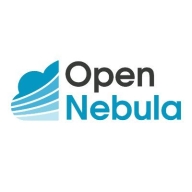

OpenText Cloud Service Automation and OpenNebula are competing products in the cloud service automation market. OpenNebula is often seen as having the upper hand due to its robust feature set that justifies its price, while satisfaction with pricing and customer support leans towards OpenText Cloud Service Automation.
Features: OpenText Cloud Service Automation offers strong integration capabilities and a comprehensive management console for complex enterprise environments. OpenNebula supports hybrid and multi-cloud setups, provides enhanced scalability options, and offers efficient resource management.
Room for Improvement: OpenText could improve in customizing solutions to specific needs, enhancing user experience, and simplifying scalability. OpenNebula would benefit from refining its documentation, expanding community support, and improving its initial setup complexity.
Ease of Deployment and Customer Service: OpenNebula offers a flexible deployment model with optimized solutions for hybrid cloud environments and responsive customer service. OpenText Cloud Service Automation focuses on centralized management, often requiring more effort for solution customization.
Pricing and ROI: OpenText Cloud Service Automation offers competitive pricing with a lower initial investment. OpenNebula, despite higher setup costs, delivers better ROI through its comprehensive feature set and scalability.
| Product | Market Share (%) |
|---|---|
| OpenNebula | 5.7% |
| OpenText Cloud Service Automation | 0.7% |
| Other | 93.6% |


| Company Size | Count |
|---|---|
| Small Business | 7 |
| Midsize Enterprise | 6 |
| Large Enterprise | 3 |
| Company Size | Count |
|---|---|
| Small Business | 1 |
| Large Enterprise | 6 |
OpenNebula provides the most simple but feature-rich and flexible solution for the comprehensive management of virtualized data centers to enable private, public and hybrid IaaS clouds. OpenNebula interoperability makes cloud an evolution by leveraging existing IT assets, protecting your investments, and avoiding vendor lock-in.
OpenNebula is a turnkey enterprise-ready solution that includes all the features needed to provide an on-premises (private) cloud offering, and to offer public cloud services.
OpenText Cloud Service Automation provides open, heterogeneous, extensible enterprise-grade cloud service lifecycle management to design and orchestrate full stack services. CSA embraces existing automation assets with an enhanced orchestration engine, which provides IT with an informed, transparent delivery of secure compliant services for the hybrid cloud.
We monitor all Cloud Management reviews to prevent fraudulent reviews and keep review quality high. We do not post reviews by company employees or direct competitors. We validate each review for authenticity via cross-reference with LinkedIn, and personal follow-up with the reviewer when necessary.